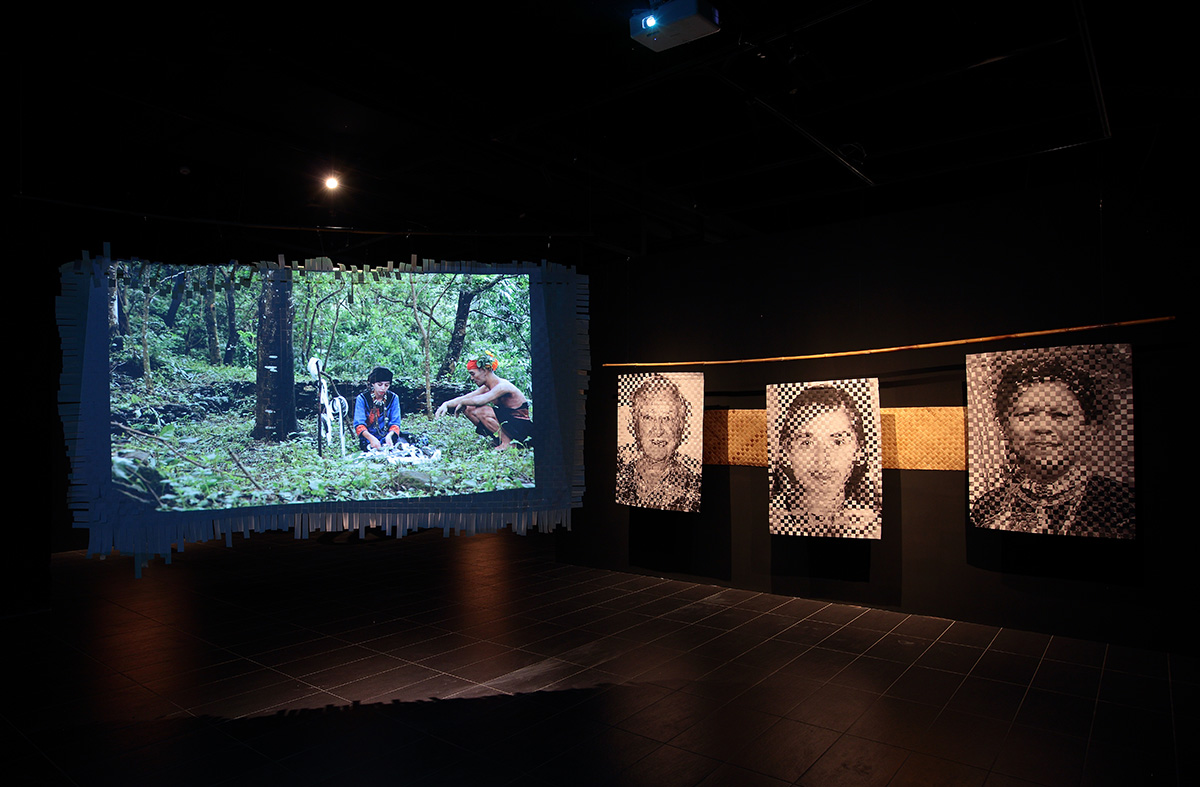
Around five thousand years ago, the ancestors of Taiwanese Indigenous people began sailing across the Pacific Ocean, beginning a migration that would come to settle Micronesia, Polynesia, the south-east Asian archipelago, and Madagascar. Today the legacy of this journey lies in the Austronesian family of languages which is spoken across regions including Indonesia, Malaysia and the Philippines, as well as in parts of Burma, Vietnam and southern China. Artists and cultural workers in Taiwan closely follow new archaeological, linguistic and genetic research on the migration, and have begun fostering connections with fellow Austronesians who live across the seas. [1]After centuries of marginalisation by waves of Han people who came to farm the island’s fertile plains, Indigenous people take pride from the way that Pacific Islanders refer to Taiwan as the ‘Mother Island.[2]
RamiS: Tracing Origins is the theme of the inaugural Taiwan International Austronesian Art Triennial (TIAAT), taking place in the Majia Township in the country’s southern mountains. RamiS is an ancient root word, shared across Austronesian languages, and describes the trunk of a plant and its growth outwards.[3] Here it serves as a metaphor for the multiplicity of origin stories and diverse fates of Austronesian peoples, from Muslim Indonesia to Polynesian Hawaii. It is a metaphor for the way people moved and developed differently across the Pacific and Indian oceans. The curators of the Triennial want to emphasise unity in this diversity, the way in which there are commonalities across these cultures, in spite of their having branched off to live in various countries, cultures and geographies.[4]There is an artistic as well as linguistic legacy of this ‘Out of Taiwan’ history that includes the use of bark cloth, types of decoration, ritual tattooing and boat making.[5]
An emphasis upon textiles among the artists in the Triennial has created some of its most striking works. A towering crochet installation by Milay Mavaliw sits in the middle of a central domed space in one of the two exhibition venues. Its fabrics hangs around a centrally lit pillar that grows as an uncanny, organic form from the gallery floor to represent the migration across the seas. The piece draws upon rituals from Mavaliw’s Puyuma people, as well as her experience working in Japan as a designer.
Another large installation is a life-sized boat woven by Yuma Taru that sails through colourful waves. Sea-Rise (2023) and River-Flow (2023) speak back to the way that weaving was discouraged by the Taiwanese government, dismissed as useless work. They wanted Indigenous populations to take up farming instead. The Triennial’s spectacular installations are something of a declaration that traditional practices are part of the artist’s identities. The emphasis upon boats in RamiS: Tracing Origins is another way of protesting the marginalisation of Indigenous peoples, as they emphasise their links to an international population of seafaring Austronesians, and not only to Taiwan. This is especially the case for Taru, whose Atayal people live in the mountains, but who has taken inspiration from the sea to make a colourful, dynamic scene of a boat moving through water.
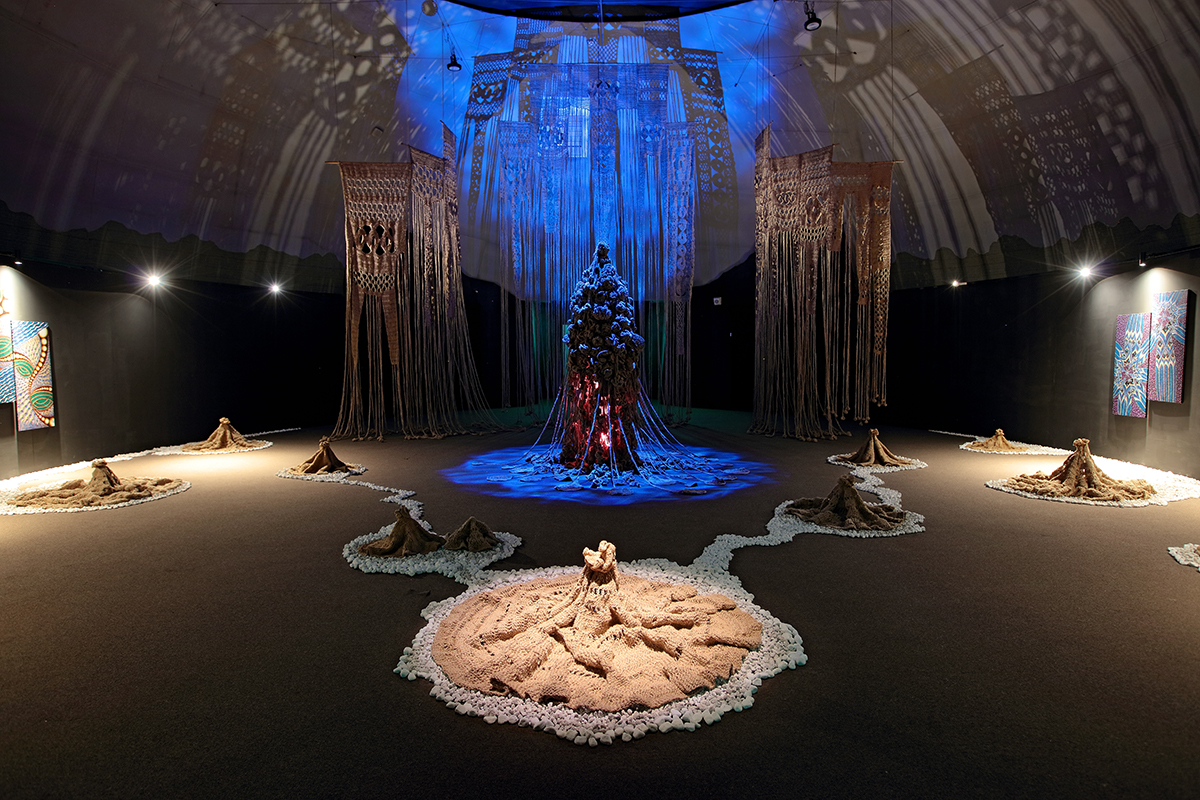
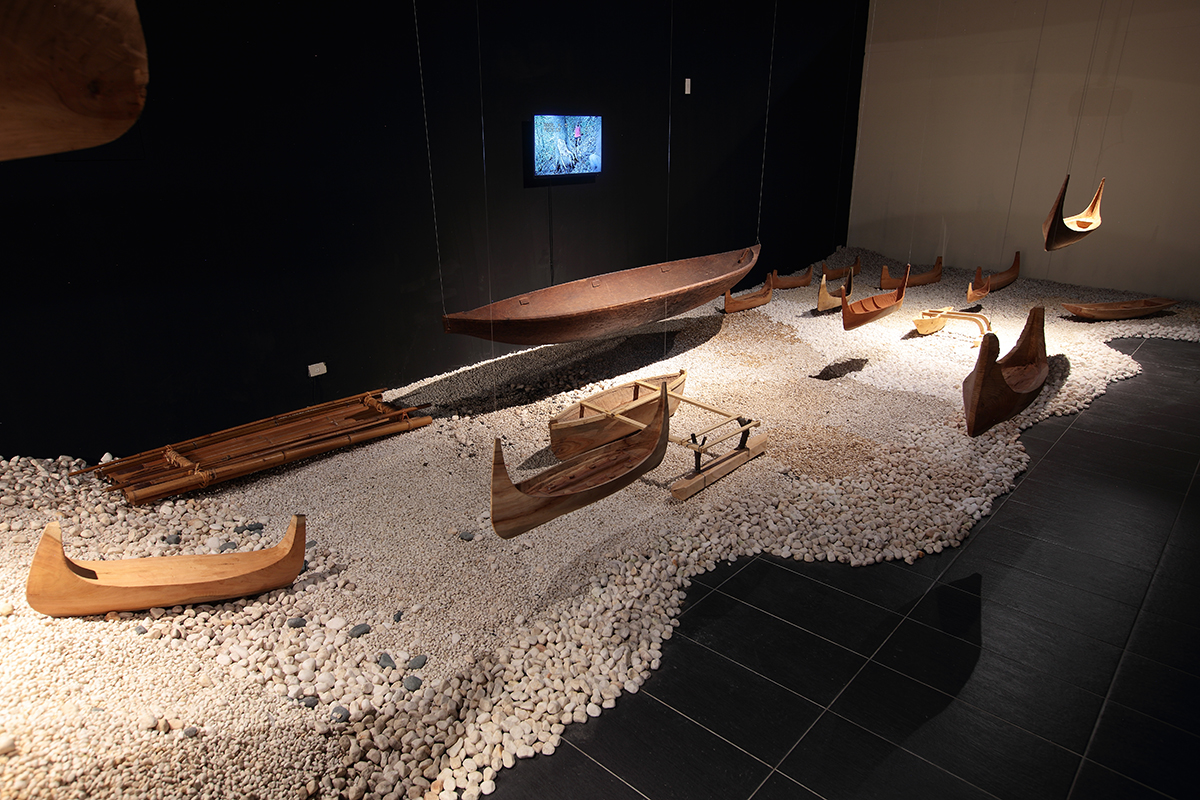
It is not only early sea migrations that inspire this focus on seafaring craft among the Triennial’s artists. It is also a more recent history of shipping. In 1687 the English seaman William Dampier encountered a Cham Island ship from the Indochinese (now Vietnamese) coast in the Gulf of Siam. He wrote of them being ‘most neat and dexterous about their shipping, of any such I have met with in all my Travels.[6] In the modern era, the superior seacraft of Austronesian sailors made them the leading traders in sandalwood and spice from remote Indonesian islands to the empires of China and India. The renaissance of interest in seafaring has inspired a neo-traditional movement of building boats and navigating, and some of this renaissance is represented here by Taiwanese boat builders.[7] Sya man Misrako has made series of small, model scale boats and some larger boats, on display through the gallery, using carving designs learnt from different parts of the Pacific. Partly and fully carved, they configure some of the aspirations of the Triennial’s theme. Misrako declares that ‘Taiwan’s oceans are too solitary,’ and represents hopes for coming generations that he wants to educate in boat building, and the passing down of traditional skills and knowledge. [8]The variety of forms also convey something of Misrako’s own process of learning in workshops with other Pacific peoples. The dynamic arrangement of the boats into a fleet ‘sailing’ across the floor, another fleet flying through the air represents something of a historical moment among artists learning to work with new mediums, in big spaces and with the inspiration of a powerful history revived.
This preoccupation with mobility in the Triennial includes kinetic installations and sweeping representations of the ocean. The works show something of the frustration of a largely sedentary population of Indigenous people in Taiwan, many of whom are no longer living on traditional land. After being displaced by Typhoon Morakot in 2009, hundreds of families were resettled in Pintung County, a stretch of populated mountain slopes where the Triennial’s venue, the Taiwan Indigenous People's Culture Park, is located. Urbanisation has been difficult especially for elderly people who miss their homes and their customary country. However, this shared plight has also produced an intensive cosmopolitanism. With the fascination with the ‘Out of Taiwan’ history of migration. this cosmopolitanism is increasingly defined as international and seafaring. It’s as if the ocean voyages of ancient and modern times offer a model for a new, decolonising era in which people reconnect across the seas.
The Triennial has renewed the Culture Park in ways that are very different to its original conception some thirty-six years ago. Until recently, it hosted ethnographic displays of traditional housing and culture to educate Han Taiwanese people about the different Indigenous populations of the islands, and to attract tourists to this mountain region. When I visited, the Park was crowded with small children in school groups moving between pavilions. The government’s patronage of Indigenous cultures, and the Culture Park itself, is not however seen as completely benign by the people who live in the region. As my Paiwan guide told me, the government likes their natives ‘singing and dancing.’ She is part of a generational shift among the Park’s workers bringing changes to the way Indigenous people are represented there.
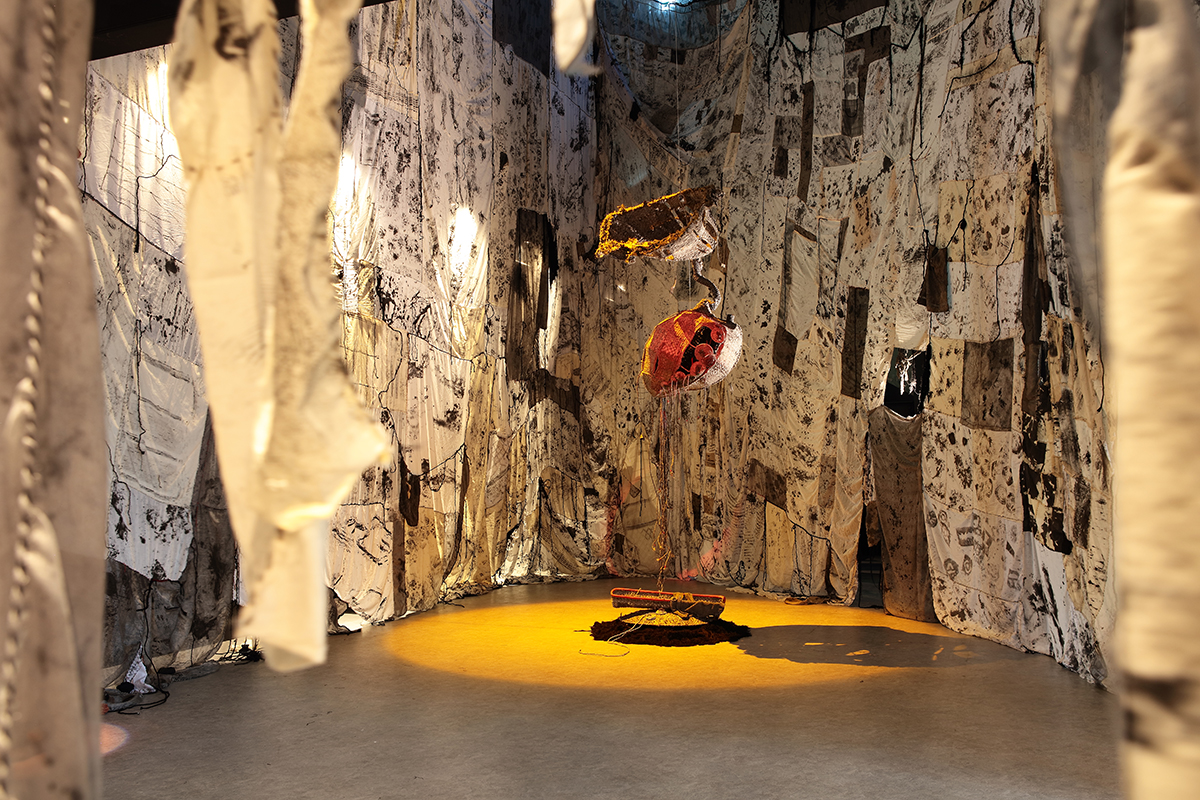
The Triennial is part of this shift, and part of a renewed interest in Indigenous arts in Taiwan. In 2019 the Park hosted a show of artists from the greater Sandimen region, and in 2012 an exhibition from across Taiwan’s Indigenous groups; both were important in conceiving and establishing this first TIAAT. Interestingly, the curators work in two different buildings to realise their creative visions for RamiS: Tracing Origins. Etan Pavavalung’s half is titled Why We are Us, (or We, Our, Us in Mandarin, 我们). Nakaw Putun's curatorial theme, Becoming Spiritual, tends to feature artists working with more classical media, such as wood carving. By contrast, Pavavalung’s venue shows a younger generation of artists, with work less explicitly drawing on traditional knowledge and motifs. Here Sutipau Tjaruzaljum engages critically with the Park’s legacy with a triptych of photographs of the faces of statues that were, until recently, featured in ethnographic dioramas of Paiwan, Tao, Atayal and other Indigenous peoples. Tjaruzaljum has cut the photographs into a grid and used paper weaving, making the images appear digitally constructed; they also resemble police sketches of criminals at large. The piece stands out as a more critical work that engages more specifically with the Culture Park when seen among the large scale, high-key and ‘traditional’ works dominating the Triennial.
There are other pieces that radicalise Indigenous identity too, including speculative, futurist installations that draw upon Indigenous storytelling. Ciwas Tahos’ Temahahoi (Women’s Society) (2023) uses video and sculpture to create a post-sex, feminine world without men. Reproducing by sitting on rocks and allowing the wind to pass through their legs, the women of Temahahoi do not have physical sex, but are intimate with each other by blowing on clay wind instruments. Other artists hybridise the mythological world of Taiwan into indigenous futurisms. Reretan Pavavaljung paints imagined creatures that inhabit a bright world of greens, reds and yellows. Anguc Makaunamun’s sculpted clay heads, Among Beast Heads (2023) possess the features of both animals and humans,and are decorated with multiple eyes and tattoos. They loom over us in the exhibition space, representing a ‘fluidity of culture’ in which indigenous identities change as they encounter others.[9]
Several of the artists in the Triennial are beginning to exhibit internationally. Taru showed work in the Gwangju Biennale in Korea in 2023, while an earlier version of Rawus Tjuljaviya’s Floating System for Snails (2009–) was shown at documenta fifteen in 2022. The installation is based on the African Giant Snail colonisation of Taiwan, snails that her Paiwan family would eat when she was a child. One of the larger, and most poignant installations in the TIAAT is by Aluaiy Kaumakan, who exhibited in the 2022 Biennale of Sydney. She takes rubbings of Indigenous carved designs seen on traditional houses, using ash from ceremonial fires and fabric which are displayed as large enclosing curtains. (The houses were abandoned after typhoons, so Kaumakan’s journey back to them, accompanied by elders of Indigenous communities in Sandimen, makes the work relational, even therapeutic.) A sculpture of a Paiwan ritual made from the decorated fabric gives the installation an esoteric sense of being inside a body, within a spiritual world.
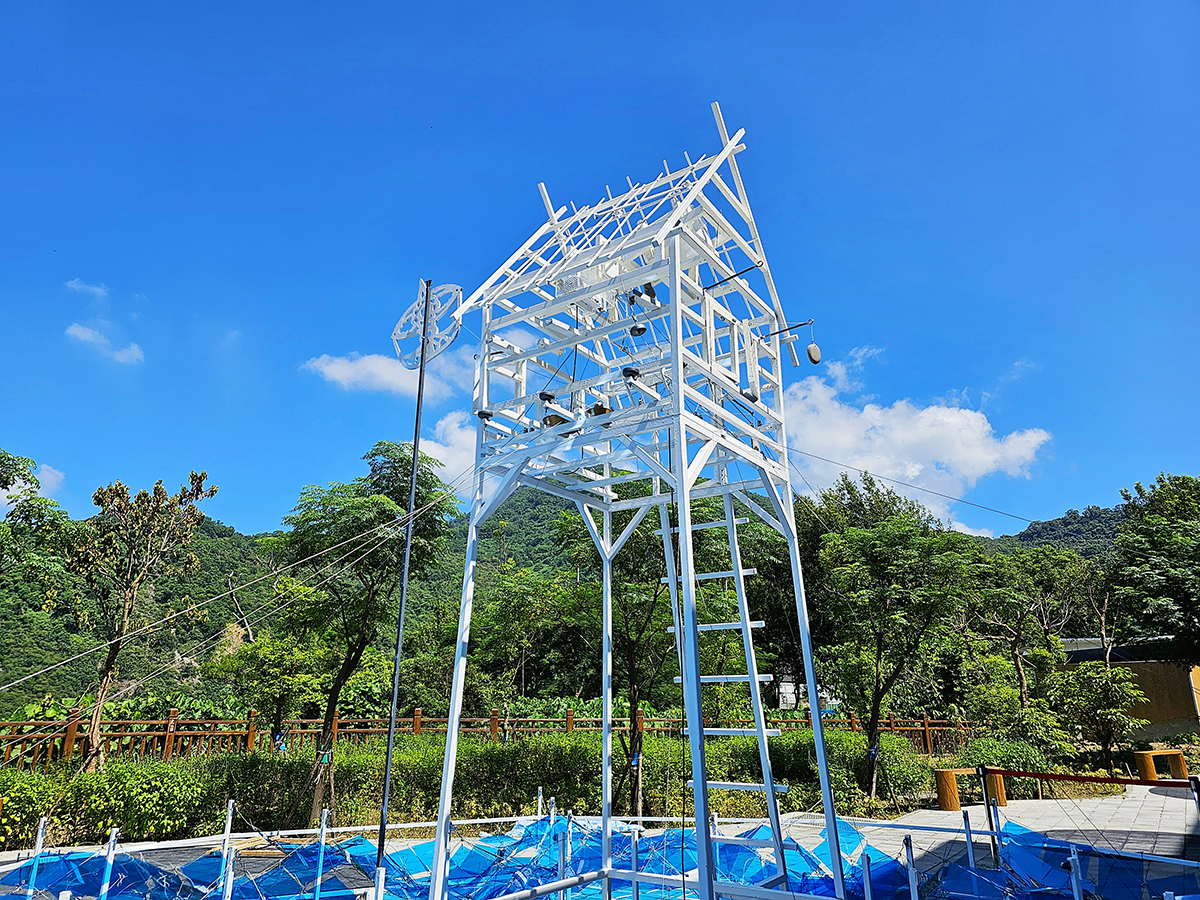
Many of the RamiS: Tracing Origins artists, including Kaumakan, have been working as artists for only a few years, bringing a sincerity and passion to their work that emphasises a newfound ambition to share little-known traditions of Taiwan. As they have gained experience exhibiting in Taiwan, their ability to create work rich in ideas matches the spectacular formats by which biennales and triennials have made their mark on contemporary art. The internationalisation of this newest Triennial is visible in three artists from across the Austronesian world, including Aotearoa / New Zealand’s Lisa Reihana, Indonesia’s I Made Sukariawan and Chee Wai Loong from Malaysia.
Placing Taiwanese Indigenous artists into a broader context has worked curatorially, given the ‘Out of Taiwan’ migration narrative driving so many local artists. The idea of language communities linked by a deep history has the effect of overwriting the essentialism by which Taiwanese Indigenous people have all too easily been classified and locked in the past. The placement of this Triennial, amid dynamic Indigenous populations, staged at their a local Culture Park has inaugurated a very different kind of art event. Consider for example the Metropolitan Museum of Art’s 2023 off-site exhibition, The Shape of Time: Art and Ancestors of Oceania at the Museum of Art in Shanghai, dominated by the Museum’s nineteenth and twentieth century collections of Austronesian artefacts in a ‘commemoration of ancestors’. [10] Consider too the typical biennials and triennials which address global themes, populated by works that could sit anywhere in the world. TIAAT reverses both the global generality of such events, and the historicising of exhibitions such as Oceania; rather than a purpose to explore global issues, or an ossified past, it presents a search for commonality and identity across a vast oceanic regionalism, building on twenty-first century research into human histories of long duration.
Footnotes
- ^ For research on Austronesian history, see Peter Bellwood, James J. Fox and Darrell Tryon, ed, The Austronesians: Historical and Comparative Perspectives, ANU Press, (Canberra: 2006) and Jared M. Diamond, ‘Taiwan’s Gift to the World’, Nature, no 403, (17 February 2000): 709-710
- ^ ‘Tracing the Path of Austronesian Peoples to the World,’ Ramis: Tracing Origins, exhibition catalogue, Taiwan International Austronesian Art Triennial, (Pingtung, Taiwan, 2023), 18
- ^ James J. Fox, ‘Austronesian Societies and their Transformations,’ in Peter Bellwood, et al, 233
- ^ Ian Tee, ‘Conversation with Nakaw Putun and Etan Pavavalung,’ Art and Market, 9 November 2023
- ^ Peter Bellwood, ‘The Austronesians in History: Common Origins and Diverse Transformations,’ in Peter Bellwood, et al, 3; Adrian Horridge, ‘The Austronesian Conquest of the Sea—Upwind,’ in Bellwood, et al, 144.
- ^ Anthony Reid, ‘Continuity and Change in the Austronesian Transition to Islam and Christianity,’ in Peter Bellwood et al, 335
- ^ Tung Yuan-Chao, ‘Our Distance from the Sea,’ Ramis: Tracing Origins, exhibition catalogue, Taiwan International Austronesian Art Triennial, Pingtung, (Taiwan: 2023), 29-41
- ^ "Sya Man Misrako",Ramis: Tracing Origins, 268
- ^ "Anguc Makaunamun also known as Kao Min-Hsiu", Ramis: Tracing Origins, 213
- ^ "Tung Yuan-Chao", Ramis: Tracing Origins, 37
